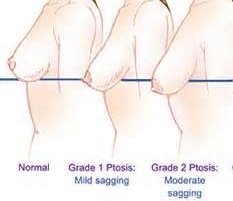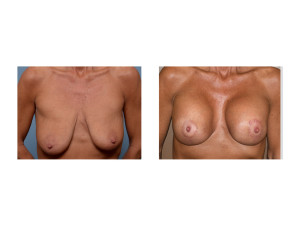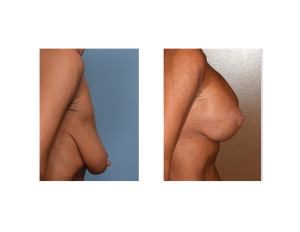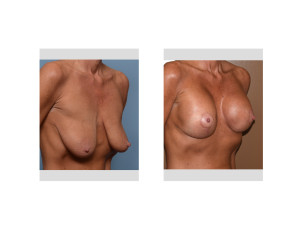Background: Severe sagging of the breasts occurs for a variety of reasons but the most common is weight loss. Weight loss creates the unaesthetic combination of excessive stretched out breast skin and loss of breast volume. Occurring together this allows many breast mounds to fall over the inframammary fold carrying the nipple with it. The empty sack of breast skin creates a very deflated breast appearance. While its look may be masked when compressed upward in a bra, its lack of support is very apparent without it.

The combination of a breast lift with an implant, the so called implant mastopexy, is always a difficult procedure to perform and get consistently pleasing results. This is because the two aesthetic breast procedures fight against each other. The breast lift tightens and make the enveloping breast skin smaller. While the role of the breast implants is to push out and expand the overlying breast tissues. These two opposing forces can make it challenging to get the right combination of implant size and degree of breast lift. When one factors in the issue of secondary tissue relaxation after any lift, the naturally ‘stretchy’ nature of the breast tissues in the weight loss patient, the normal risks and complications that come from breast implants and that every woman has two breasts that ideally should match, it should be no surprise that the revision rate on this type of aesthetic breast procedure is significant.
Case Study: This 47 year-old female was bothered by the very saggy appearance of her breasts. While once having much larger breasts significant personally-induced weight loss caused her breasts to deflate and severely sag. She passed the ‘pencil test’ with flying colors. (placing a pencil under her breasts and it stays in place) She had a full Grade III ptosis with the right breast hanging lower than the left.


While early combination breast lifts and implant result may be very acceptable, the poor quality of the breast skin/tissues will inevitably make for some secondary tissue sag off of the implants. Whether that will be enough to bother the patient is a personal decision. But it is wise in combination breast lifts with implant surgeries to anticipate the potential need for a revisional surgery.
Highlights:
1) Severe sagging of the breast always has the nipple located below the inframammary fold and is associated with significant breast tissue loss.
2) Full anchor style breast lifts are needed with Grade III ptosis and an implant to restore volume to the elevated breast mound.
3) The revision rate for combined full breast lifts with implants in Grade III ptosis is as high as 50% or more due to secondary tissue relaxation of the overlying breast mound.
Dr. Barry Eppley
Indianapolis, Indiana



